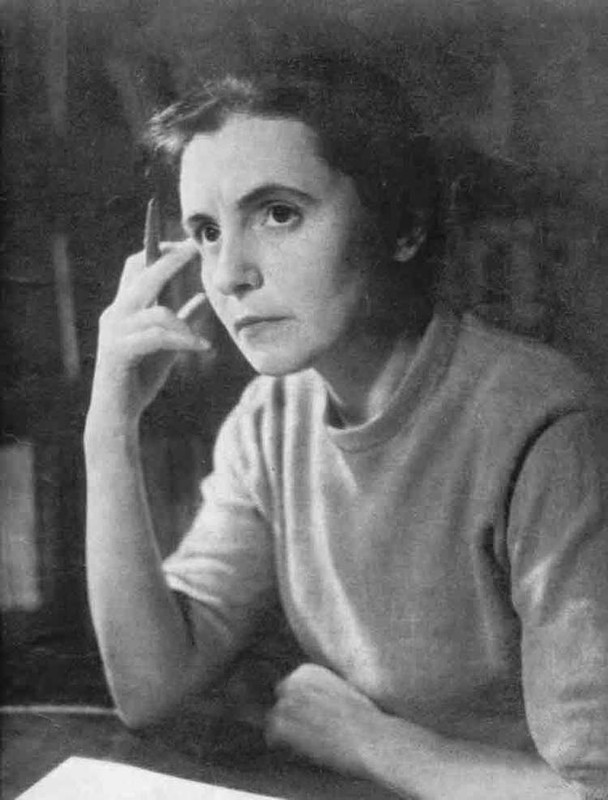1922 - 2004
Date Added:
Edited

The outstanding 20th century mathematician Olga Alexandrovna Ladyzhenskaya was born in the small town of Kologriv in the Kostroma Region. Her father, Alexander Ivanovich - a school mathematics teacher and former officer in the Tsarist army, instilled in his daughter a love for his subject at an early age -- at 10, she was already solving advanced math problems with ease, but her path to an academic career was not an easy one. Her father was purged in 1937 and shot soon afterwards, and the stigma of being the ‘daughter of an enemy of the people’ hindered Olga in her efforts to enter the Faculty of Mathematics and Mechanics of Leningrad University (LGU). She eventually managed to enter the Faculty of Mechanics and Mathematics of Moscow State University (MGU) in 1943, and in 1947 she commenced postgraduate studies at LGU, where she subsequently earned a doctorate in Physical and Mathematical Sciences and became a professor of the Department of Higher Mathematics and Mathematical Physics at LGU’s Faculty of Physics. Known for her austere demeanor, intellectual curiosity and outspokenness, Ladyzhenskaya was the author of more than 200 works dealing with a broad range of problems relating to the theory of partial differential equations. Ladyzhenskaya is best known for her innovative work on the Navier-Stokes equation, which describes the motion of viscous fluids. Despite being unaware of recent developments from Jean Leray and Eberhard Hopf (as a result of the Iron Curtain isolating the Soviet Union in the 1940-50s), she introduced the modified Navier-Stokes equations, which are now referred to as Ladyzhenskaya’s model. Beyond the Navier-Stokes equation, Ladyzhenskaya worked on partial differential equations, including hyperbolic equations and looking into the convergence of the Fourier series. Ladyzhenskaya’s mark on the field of mathematics is difficult to overstate. Her work with differential equations has implications for fields such as metereology, aerodynamics and cardiovascular science. She published over 250 papers and co-authored seven textbooks, including The Mathematical Theory of Viscous Incompressible Flow (1961) which is now considered a classic textbook in the field. Her contributions to the field have been recognized by various awards, including the USSR State Prize (1969), the Order of Friendship (1999), induction to the Lincei National Academy in Rome as a foreign member (1989). She was elected to the Russian Academy of Science in1990. Like her father, Olga had wide interests and loved not only the sciences but also painting, poetr, and music. She is noted for her love of arts, her storytelling, and her philanthropic efforts. In particular, Ladyzhenskaya would aid those facing misfortunes, and repeatedly risked her personal safety and career to aid those oppressed by the Soviet regime. She counted many cultural figures among her friends. One of them was Anna Akhmatova, and Olga was one of a select circle to whom the poetess entrusted her verses in the years of repression. She was also one of the 257 ‘Witnesses of the Archipelago’, whose narratives, letters, memoirs, and clarifications were used by Alexander Solzhenitsyn when he was working on ‘The Gulag Archipelago’. At one point, she served as a member of the city council, where she helped several Leningrad mathematicians find apartments for their families at no cost. In her final days, Ladyzhenskaya was suffering from various eye problems, and relied on special pencils to continue her work. She had drafted a paper on hydrodynamics and planned to finish it in on a trip to Florida. But two days before her trip, shortly before her 82nd birthday, Ladyzhenskaya passed away in her sleep in Russia on January 12, 2004.
click hereShare your thoughts on this story with us. Your comments will not be made public.
Email
Copyright ©2016 - Design By Bureau Blank